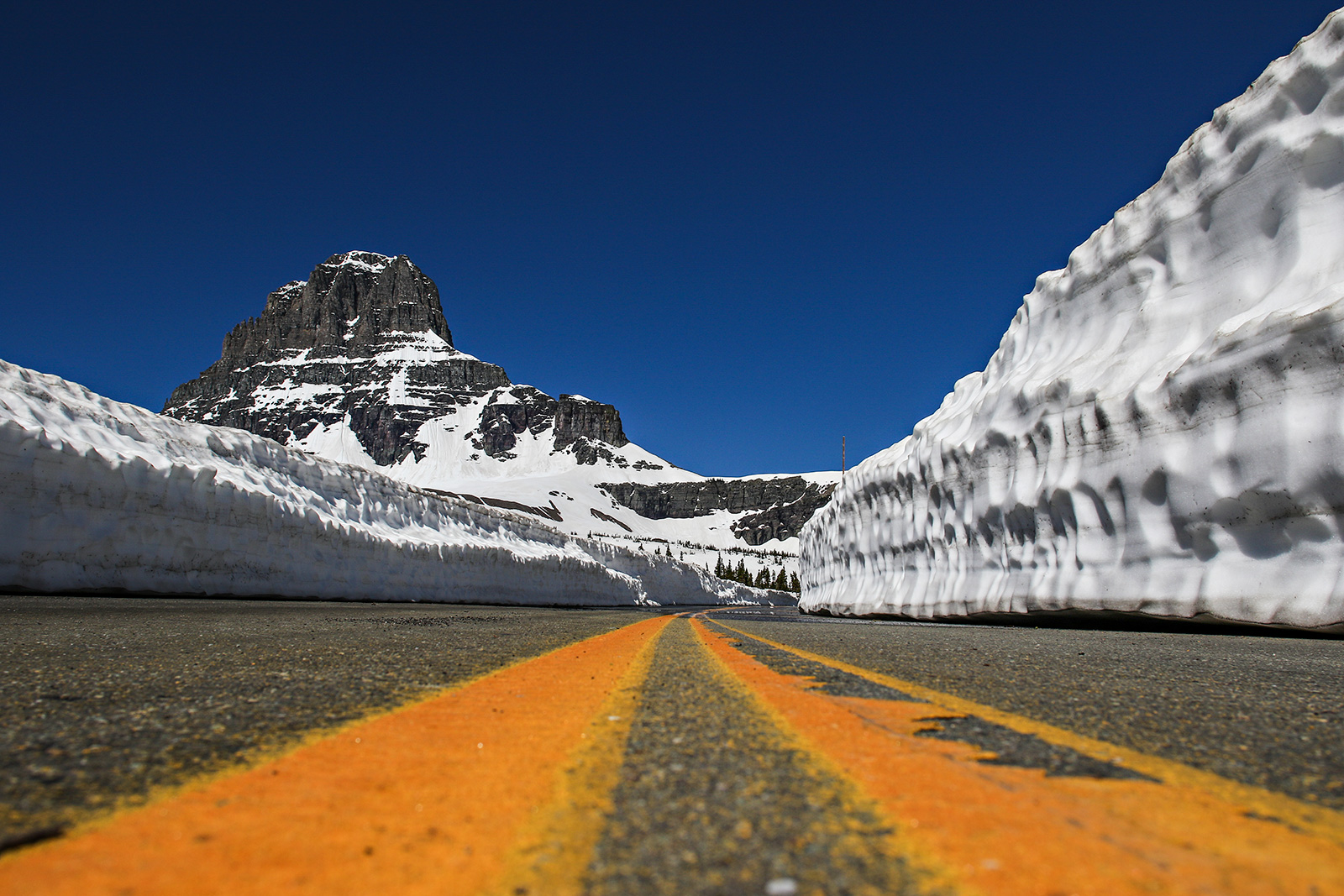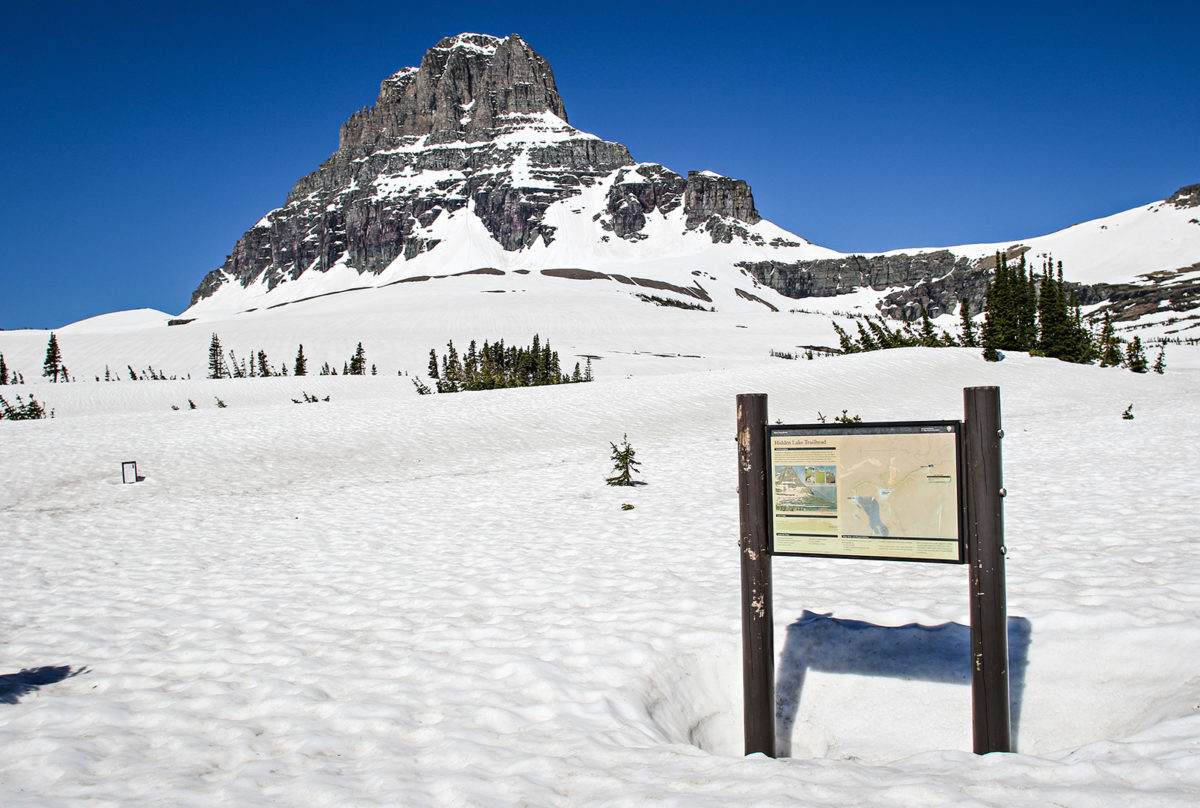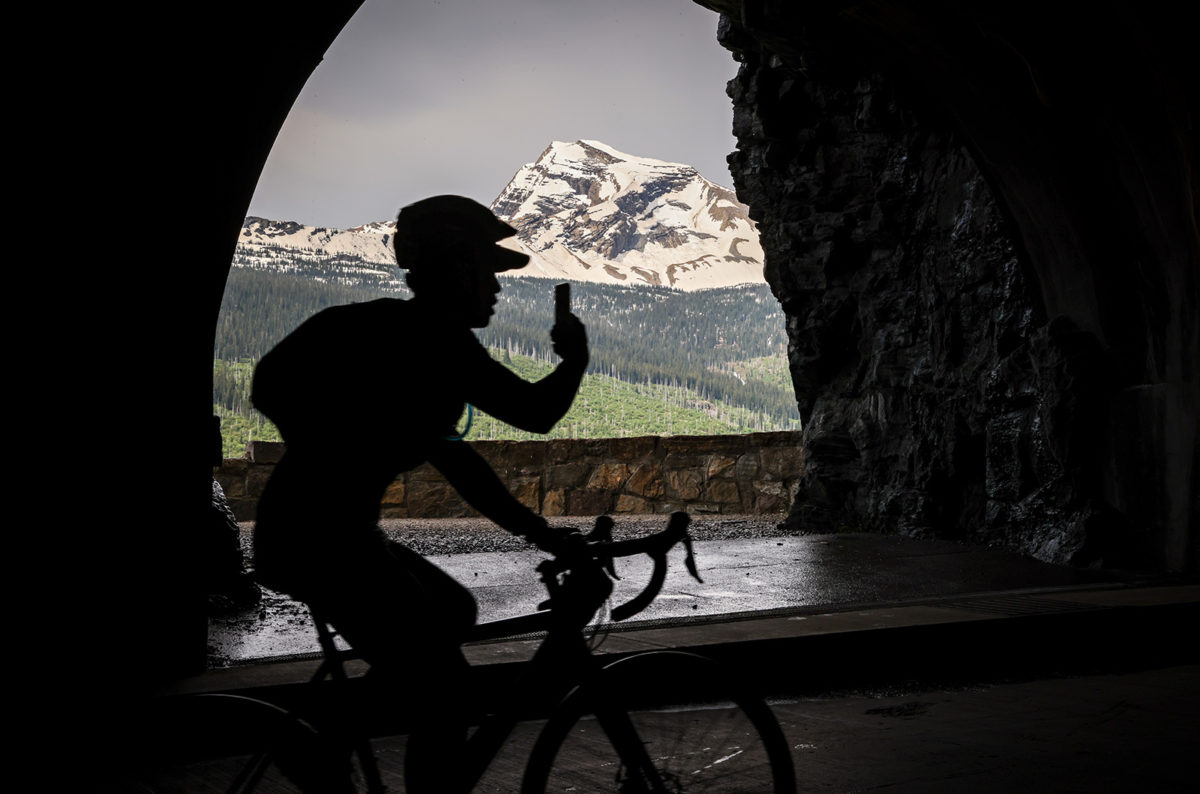
Going-to-the-Sun Road Fully Opens for Summer
Park officials announced early Friday morning that all 50 miles of the iconic alpine byway are open to motorized traffic for the first time since 2019; additional entry tickets added to online reservation portal
Despite the sweepstake-style structure of procuring a reservation ticket to access the heart of Glacier National Park this summer, and notwithstanding the logistical acrobatics of planning a trip here, it was hard not to cheer the news early Friday morning that the full length of the Going-to-the-Sun Road had opened for the first time since 2019, heralding the official arrival of summer in Northwest Montana.
After last year’s partial opening due to the COVID-19 pandemic, during which all eastern entrances adjacent to the Blackfeet Indian Reservation remained closed while access from the west was managed as one way in, one way out for the first time in history, the road’s entire length may now be accessed by motorized vehicles from both the West Glacier and St. Mary entrances.
Park officials announced the opening in a press release on June 25 at 6 a.m. as the public’s anticipation grew to a fever pitch, with recent webcam images revealing a slate-clean asphalt parking lot at Logan Pass gleaming atop the Continental Divide. Meanwhile, plowing crews have been working since April 1 to clear the road’s winter weight, having dispatched the last remaining snow hazards only a week or so ago before moving on to guard-rail installation, rock sweeps, debris cleanup, and a mountain of other miscellany attendant to opening a 50-mile alpine thoroughfare that cuts through the Crown of the Continent.
“The minute that we’re able to open the Sun Road, we open it, but there’s all kinds of things beyond our control that can happen right up until we announce,” Glacier Park Spokesperson Gina Kerzman said Friday. “It’s an exciting day both for visitors and our staff to have the road fully open.”

Even as gateway communities and out-of-state visitors received the news warmly, however, there’s a rub in 2021 — due to an impenetrable degree of congestion last summer, which park officials attributed to the public’s outsized appetite for outdoor recreation as other activities were snuffed out by the health crisis, as well as to a surge in visitation that has been climbing steadily for years, an entry reservation ticket is required for motorized traffic entering the Sun Road corridor this summer. Under a pilot program launched May 28, visitors must purchase the entry ticket online in advance of their scheduled visit, a requirement in addition to the standard entrance pass. Visitors must have their reservation in hand to access the Going-to-the-Sun Road corridor via West Glacier, St. Mary and Camas entrances between 6 a.m. and 5 p.m. daily through Sept. 6. Visitors should also expect long lines and delays if entering the park at 5 p.m. to avoid the reservation requirement.
Still, with the Going-to-the-Sun Road fully open, the number of entry tickets available to visitors has increased dramatically, an uptick that corresponds with the increase in visitor capacity as winter closures are lifted. The expanded volume of tickets released both 60 days and 48 hours ahead should help alleviate some of the frustration visitors have encountered with the National Park Service’s digital portal, recreation.gov, which becomes flooded with online traffic each morning at 8 a.m. when the next wave of tickets is released.
“Up to this point, we knew we would have it open no later than July 1,” Kerzman said, explaining that the decision to open the road earlier than that projected date meant that an additional wave of tickets was unleashed June 25. “When the Sun Road is open there’s at least three times the capacity for vehicles, so now that the road is open early those tickets will be made available every morning through next Wednesday.”
Entry reservation tickets are valid for seven days and are not required for any other portions of the park; however, visitors entering at Two Medicine, Polebridge, Many Glacier, or along U.S. Highway 2 are still subject to the per-vehicle entrance fee or park pass. These areas are congested, and visitors can expect traffic restrictions by mid-morning, while construction delays will affect most areas of the park and its gateway communities throughout the summer.
Visitors with a service reservation within the Sun Road corridor, such as a boat ride, bus tour, guided hike, horseback ride, lodging accommodation, or campground reservation, are not required to procure a ticketed entry. Tribal members and private property inholders are exempt from purchasing a ticket.

Last summer, in the throes of the pandemic, peaks in visitation triggered a succession of closures at Glacier Park’s popular west entrance on 29 occasions in 25 days, with 18 of those closures occurring in June, before the Going-to-the-Sun Road had even opened to its high point at Logan Pass. The remaining closures occurred in August and around Labor Day weekend, after the Sun Road had opened to Rising Sun Campground, at which point motorists were forced to turn around due to closures on the Blackfeet Indian Reservation.
Congestion related to those closures became so badly bottlenecked that it gridlocked traffic well beyond the park’s border, snarling traffic along U.S. Highway 2 for miles. If those circumstances were to repeat this summer, they’d be exacerbated by a months-long pavement preservation project spanning a 40-mile segment of Highway 2 from Hungry Horse to Essex, which serves as the park’s key exterior corridor. Road repair work is also scheduled for nearly every other corner of the park, including the popular Many Glacier Valley.
Although the reservation requirement has rankled visitors who have struggled to purchase a ticket, or who show up at Glacier’s gates unaware that a new system is in place, for visitors who do secure the requisite ticket, they can expect the park’s interior to appear more accommodating than in years past. Although a reservation does not guarantee a parking spot at Logan Pass, it will relieve congestion significantly, improving the visitor experience, according to Superintendent Jeff Mow.
“The goal is to maximize access while avoiding congestion that results in temporary closures of park entrance gates,” Mow stated.
Additional details for the Going-to-the-Sun Road reservation system may be found on Glacier National Park’s website.

Services at Logan Pass will include restroom facilities and potable water, while visitor information services will be provided outside of the Logan Pass Visitor Center from 9 a.m. to 7 p.m. daily. The Glacier National Park Conservancy bookstore will be operating inside of the Logan Pass Visitor Center, with access at the upper level. The bookstore will limit the number of people inside at any one time to enable appropriate social distancing.
There will be some work zones on Going-to-the-Sun Road this summer. Construction crews are installing a new vault toilet at Big Bend, and a new shuttle weather shelter at Logan Pass. There will be ongoing masonry work at various locations. Because of the construction, Big Bend will have less parking available, although the trail to the waterfall will be accessible. Visitors need to be on the lookout for these work zones, slow down, and give the construction workers a wide berth.
While driving along the road, particularly through the Rim Rock area (approximately one mile west of Logan Pass) visitors should be aware of potential rockfall and should not slow down or stop in this section. Rocks and other debris continue to fall throughout the summer, requiring daily cleanup.
Vehicles and vehicle combinations longer than 21 feet, and wider than 8 feet, are prohibited on Going-to-the-Sun Road between Avalanche Campground and Rising Sun. Vehicles over 10 feet in height may have difficulty driving west from Logan Pass due to rock overhangs.
The Highline Trail from Logan Pass is still closed due to hazardous snow conditions. For up-to-date information on trail conditions and clearing activities, visit the park’s trail status webpage.
The park’s Visitor Transportation Service, or shuttle service, along Going-to-the-Sun Road will be operational this year under a Ticket-to-Ride system. Tickets went on sale June 1 on recreation.gov and service will begin on July 1. Tickets must be validated at the visitor center selected at the time of reservation, either Apgar Visitor Center or St. Mary Visitor Center. Face masks are required on shuttles. Please check the park website for additional information on shuttle stops.
Bicyclists are reminded that bicycle safety restrictions on Going-to-the-Sun-Road are now in effect, and remain in effect through Labor Day, Sept. 6. Bicycles are prohibited in certain areas between 11 a.m. and 4 p.m. Information on bicycle restrictions may be found in the park newspaper available at park entrance stations, or online on the park’s bicycle information webpage.
With the help of the Glacier National Park Conservancy, the park has launched an Idling Awareness Campaign. Visitors are encouraged to limit vehicle idling to no more than two minutes in Glacier in parking lots, at scenic viewpoints and trailheads, and while stopped in traffic lines and road construction to benefit the health of both the public and the park resources.
Visitors should not throw food waste, including apple cores, orange peels, sunflower seeds, unwanted drinks (coffee, tea, soda), etc., out of car windows while waiting in lines. This attracts wildlife to the roadways, which increases wildlife fatalities. Discard garbage in bear-proof garbage cans.